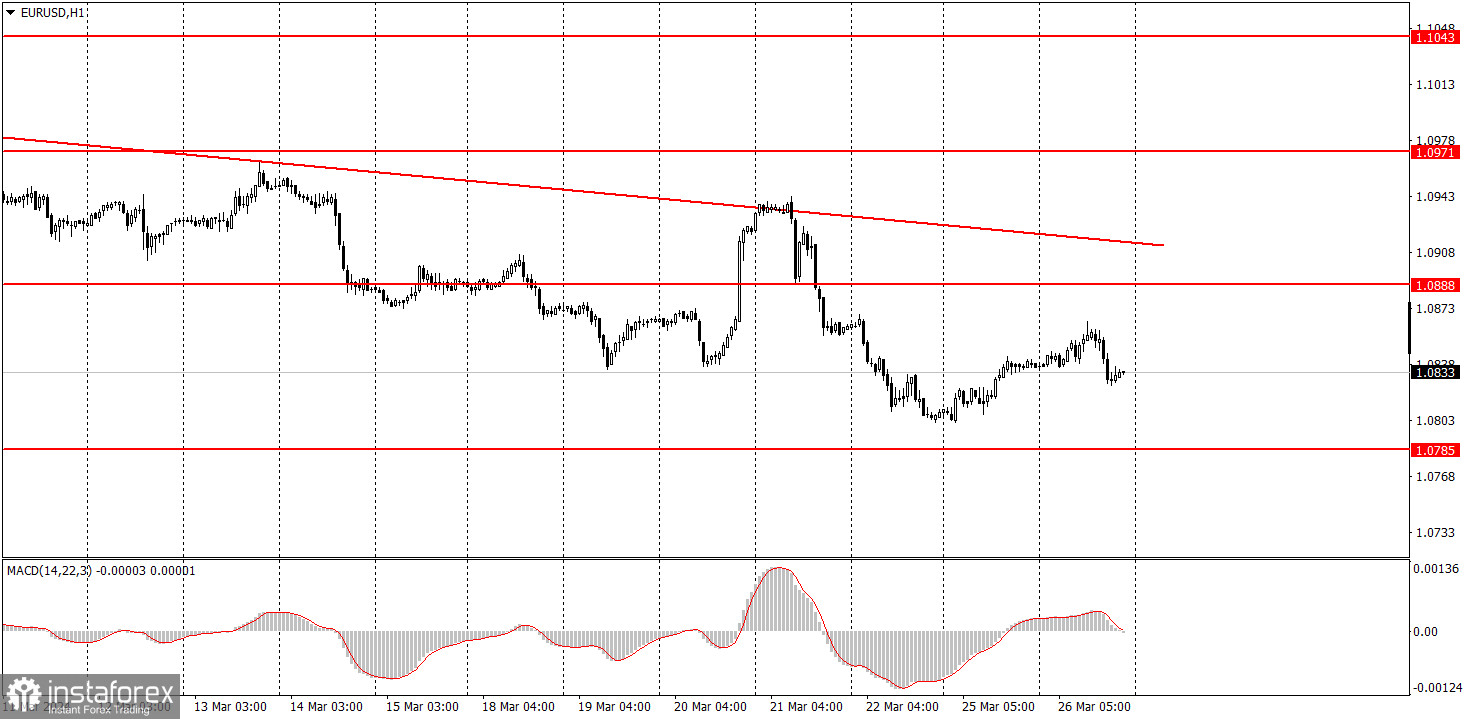Analysis of macroeconomic reports:

The economic calendar is completely empty on Wednesday. There is not a single report even of secondary importance. Therefore, today we expect a drop in volatility. We have noticed that the market has not been active at all this week. But at least on Monday and Tuesday, there were several speeches by European Central Bank and Federal Reserve representatives, as well as the release of the US durable goods orders report. Unlike today, there is basically nothing.
Analysis of fundamental events:
There are no fundamental events either. Most likely, central bank officials will speak during the day, as many of these speeches do not appear on the calendar. The calendar contains scheduled speeches, but not interviews or participation in various radio broadcasts or podcasts. However, in any case, the market does not expect any loud statements from these officials at this time.
General conclusion:
There are practically no macroeconomic or fundamental events on Wednesday. Volatility will likely remain weak, and both pairs may continue to correct higher. However, since the downtrend remains intact, we believe that you should look for new sell signals. And since the pair is following a downtrend, it has a better chance of becoming stronger than any corrective movement. However, the problem is that there are no particularly strong sell signals at the moment.
Basic rules of a trading system:
1) Signal strength is determined by the time taken for its formation (either a bounce or level breach). A shorter formation time indicates a stronger signal.
2) If two or more trades around a certain level are initiated based on false signals, subsequent signals from that level should be disregarded.
3) In a flat market, any currency pair can produce multiple false signals or none at all. In any case, the flat trend is not the best condition for trading.
4) Trading activities are confined between the onset of the European session and mid-way through the U.S. session, after which all open trades should be manually closed.
5) On the 30-minute timeframe, trades based on MACD signals are only advisable amidst substantial volatility and an established trend, confirmed either by a trendline or trend channel.
6) If two levels lie closely together (ranging from 5 to 15 pips apart), they should be considered as a support or resistance zone.
How to read charts:
Support and Resistance price levels can serve as targets when buying or selling. You can place Take Profit levels near them.
Red lines represent channels or trend lines, depicting the current market trend and indicating the preferable trading direction.
The MACD(14,22,3) indicator, encompassing both the histogram and signal line, acts as an auxiliary tool and can also be used as a signal source.
Significant speeches and reports (always noted in the news calendar) can profoundly influence the price dynamics. Hence, trading during their release calls for heightened caution. It may be reasonable to exit the market to prevent abrupt price reversals against the prevailing trend.
Beginners should always remember that not every trade will yield profit. Establishing a clear strategy coupled with sound money management is the cornerstone of sustained trading success.






















